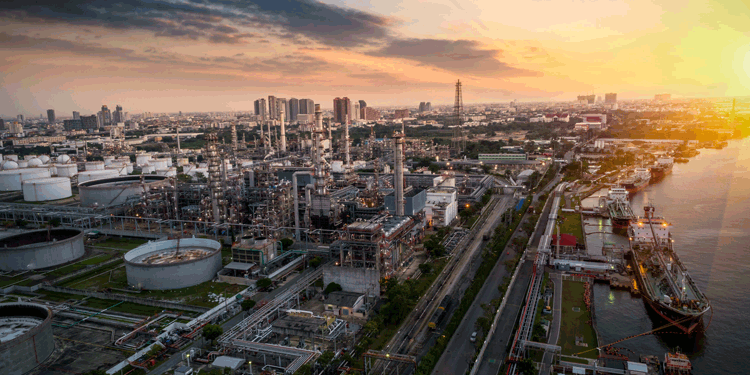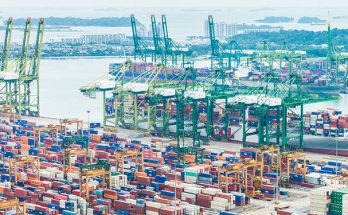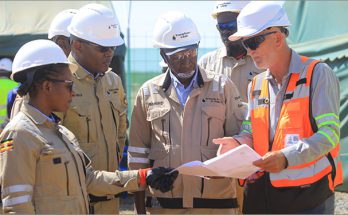 Atlas Oranto Group, a pan-African independent explorer, will be a featured speaker at the next U.S.-Africa Energy Forum (USAEF) 2021 in Houston, Texas, organised by Energy Capital & Power (ECP). Following the successful completion of early seismic acquisition campaigns and mapping of drill-ready prospects, Atlas Oranto will promote a succession of farm-in, drilling, and collaboration options. Equatorial Guinea, where the Group has stakes in six blocks, including producing assets in Block I, is a promising market for further exploration and development. Gabriel Mbaga Obiang Lima, Minister of Mines and Hydrocarbons of Equatorial Guinea, USAEF 2021 will connect leading investment projects and licensing opportunities to U.S. operators, finance firms and service providers, on behalf of both the government and private sector players.
Atlas Oranto Group, a pan-African independent explorer, will be a featured speaker at the next U.S.-Africa Energy Forum (USAEF) 2021 in Houston, Texas, organised by Energy Capital & Power (ECP). Following the successful completion of early seismic acquisition campaigns and mapping of drill-ready prospects, Atlas Oranto will promote a succession of farm-in, drilling, and collaboration options. Equatorial Guinea, where the Group has stakes in six blocks, including producing assets in Block I, is a promising market for further exploration and development. Gabriel Mbaga Obiang Lima, Minister of Mines and Hydrocarbons of Equatorial Guinea, USAEF 2021 will connect leading investment projects and licensing opportunities to U.S. operators, finance firms and service providers, on behalf of both the government and private sector players.
The Group’s exploration portfolio in Equatorial Guinea is centred by a production hub in Block I, which is home to the Aseng oil and gas condensate fields, as well as a Block O extension of the Alen gas condensate complex. With fresh field development potential on the horizon, the block now produces 18,000 barrels of oil per day and 153 million cubic feet of gas reinjected per day. Blocks I and O are also the site of the multi-million-dollar Alen gas monetization project, which represents the first phase of Equatorial Guinea’s flagship Gas Mega Hub that seeks to pool stranded gas supply and develop gas-based downstream industries. In conjunction with block partners, Atlas Oranto has invested $350 million in the Alen backfill project that successfully achieved first gas last March.
“Our investment into Equatorial Guinea, Senegal, Uganda, Sao Tome, Nigeria and many African countries confirms Atlas Oranto as a strong African crude oil player but as a company that also sees the role of natural gas in Africa. We firmly believe that gas monetization is not only the key for Equatorial Guinea, Nigeria, Senegal … but also for the whole of Africa. Atlas Oranto will continue to invest in gas monetization projects across the continent, including gas-to-power and the curbing of gas flaring,” said Prince Arthur Eze, Executive Chairman of Atlas Oranto.
Atlas Oranto is conducting exploring activities in Blocks EG-02 and H, where thorough investigations have shown large hydrocarbon possibilities, as the Central African nation looks to drive upstream investment. Initial interpretation of a seismic survey on Block EG-02 has more similarities to discoveries in Blocks I and O in the Douala Basin, and the completion of key horizon mapping promises strong potential. Similarly, Atlas Oranto is seeking a partner to drill Block H, following extensive 3D seismic studies that show similar characteristics to the nearby producing Ceiba and Okume Complex. Atlas Oranto is also seeking farm-in partners to continue exploration efforts in Block J, which has undergone two seismic acquisition programs and lies directly adjacent to the gas-rich Block R. The Group has a commitment to drill one exploration well under its license terms and requires a farm-in partner to continue the work.
“Equatorial Guinea has a wide range of geological potential, combining established and producing assets with untapped continental basins with the potential to significantly increase the region’s reserves. In short, it is a unique market with both frontier and mature prospects, where operators are met with robust support from the State in establishing new onshore drilling plans,” said Francis Inniss, Senior Exploration Advisor to Atlas Oranto Group.
In Block P, the Group is leading a development plan, in conjunction with technical operator Vaalco Energy, to begin a drilling campaign on the Venus Production and Development Area with a two-well minimum that targets the SW Grande and Marte Prospects. Spanning approximately 1,200 km² in the Rio Muni Basin, the block lies 50-km north of the producing Ceiba and Okume fields. Additionally, the sand reservoirs in the Venus Field in Block P have been confirmed to be of the same type as other Rio Muni discoveries that carry proven reserves of around 500 million barrels of oil. As a result, the Venus Field is regarded as highly promising, with recoverable resources estimated to be between 15 and 30 million barrels.



